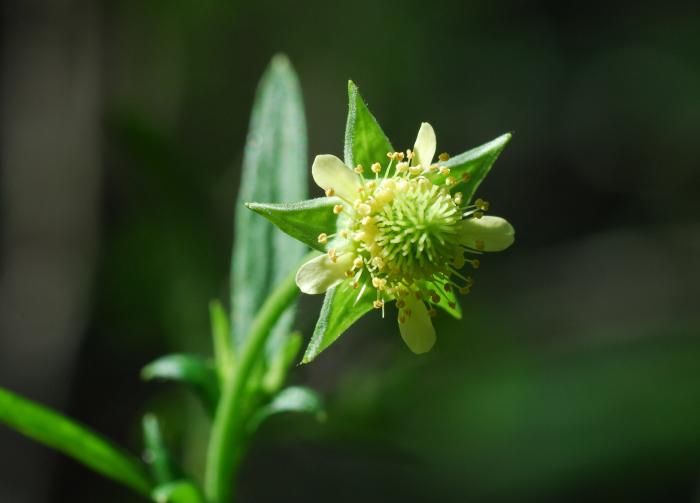Geum virginianum L.
Pale Avens

Native
CC = 9
CW = 3
MOC = 16
© SRTurner
Geum virginianum L.Pale Avens | |
 |
Native CC = 9 CW = 3 MOC = 16 |
© SRTurner |
|
Family - Rosaceae
Stems - Erect, to 1 m, densely pubescent.
Leaves - Basal leaves simple or 3-5 pinnately compound, petiolate. Upper cauline leaves simple, nearly sessile, stipulate, broadly ovate, coarsely toothed, sometimes lobed, moderately pubescent.
Flowers - On long stalks which are densely pubescent with minute velvety hairs and with sparse longer spreading hairs. Sepals 3.5-5.0 mm long, alternating with shorter bractlets. Petals 2-4 mm long, distinctly shorter than the sepals, cream to yellow. Styles jointed, with apical portion 1-2 mm long, this sparsely to moderately pubescent.
Fruits - Sepals reflexed in fruiting clusters. Fruits with main body 2-3 mm long, hairy, with persistent stylar beak 4-7 mm long.
Flowering - May - August. Habitat - Forests. Origin - Native to the U.S. Other info. - This species has been considered uncommon and endangered in Missouri. However, numerous large populations have recently been discovered, suggesting that the plant was overlooked or misidentified in the past. A key differentiator from the more common Geum canadense are petals which are pale yellow and shorter than the sepals, as shown in the photo above. In addition, the plant has dense, long hairs on the lower stem, whereas in G. canadense the lower stem is merely roughened. The leaf stipules of Geum virginianum also tend to be larger and more lobed. Photographs taken at Don Robinson State Park, Jefferson County, MO, 6-25-2017 (SRTurner). |